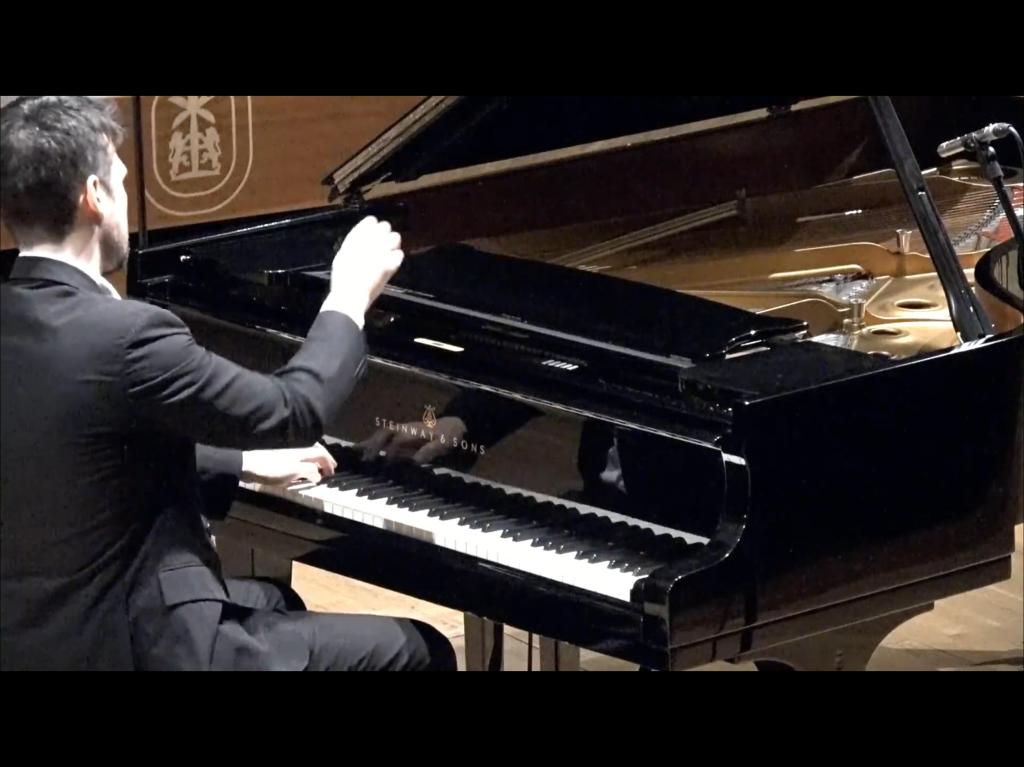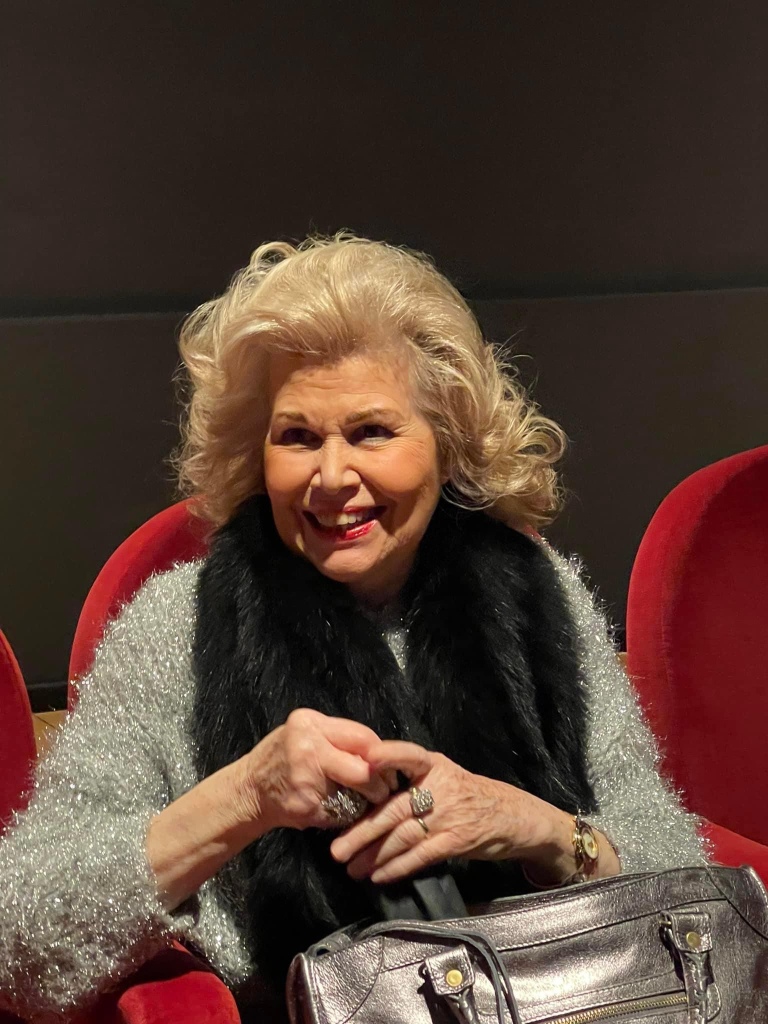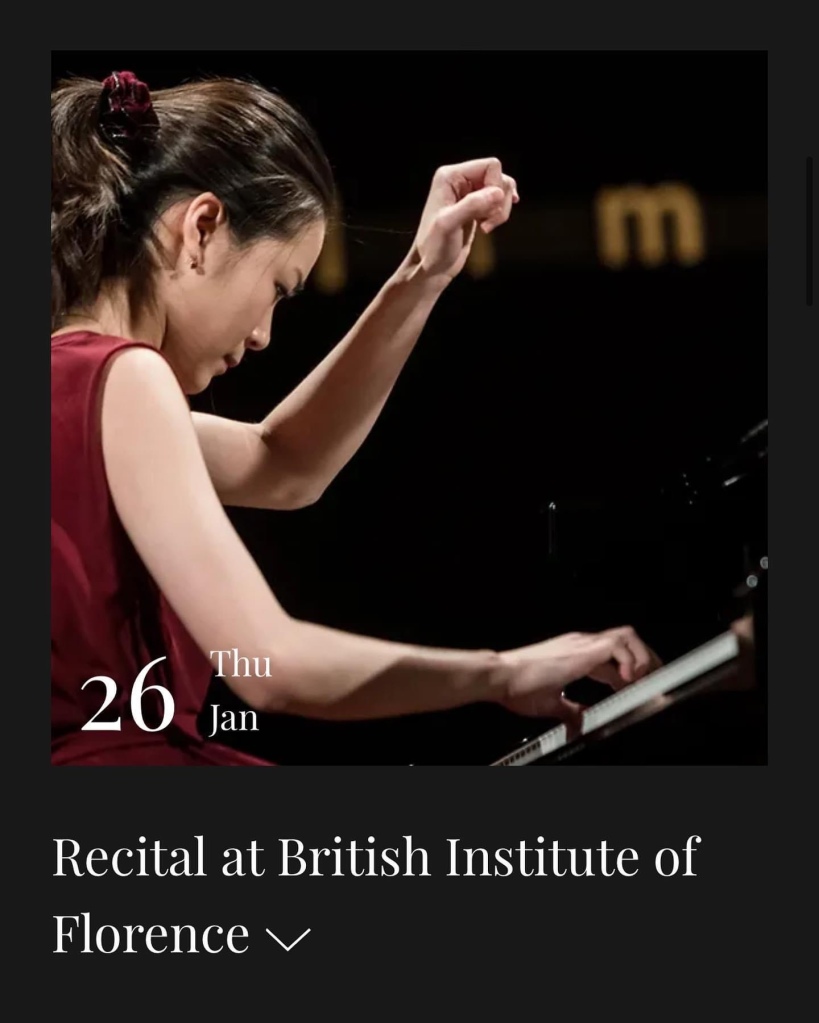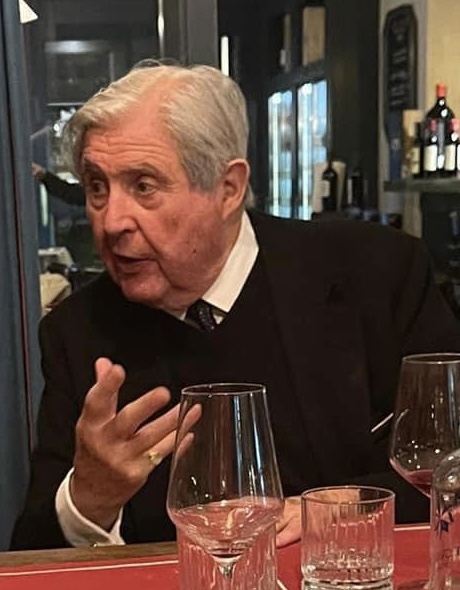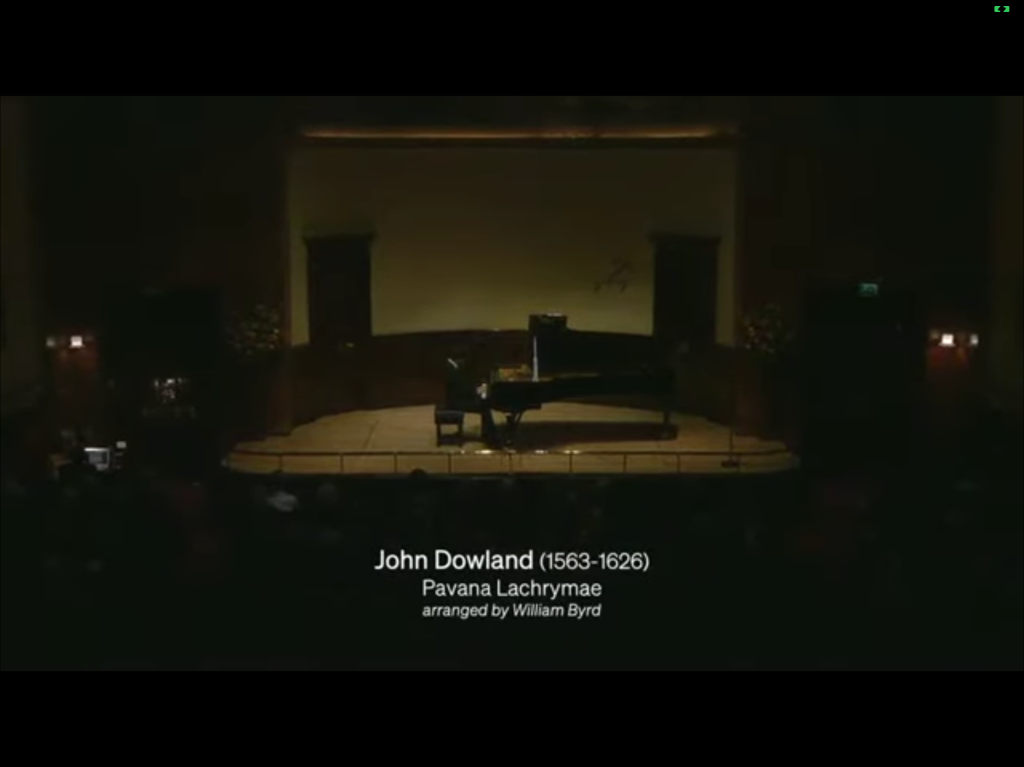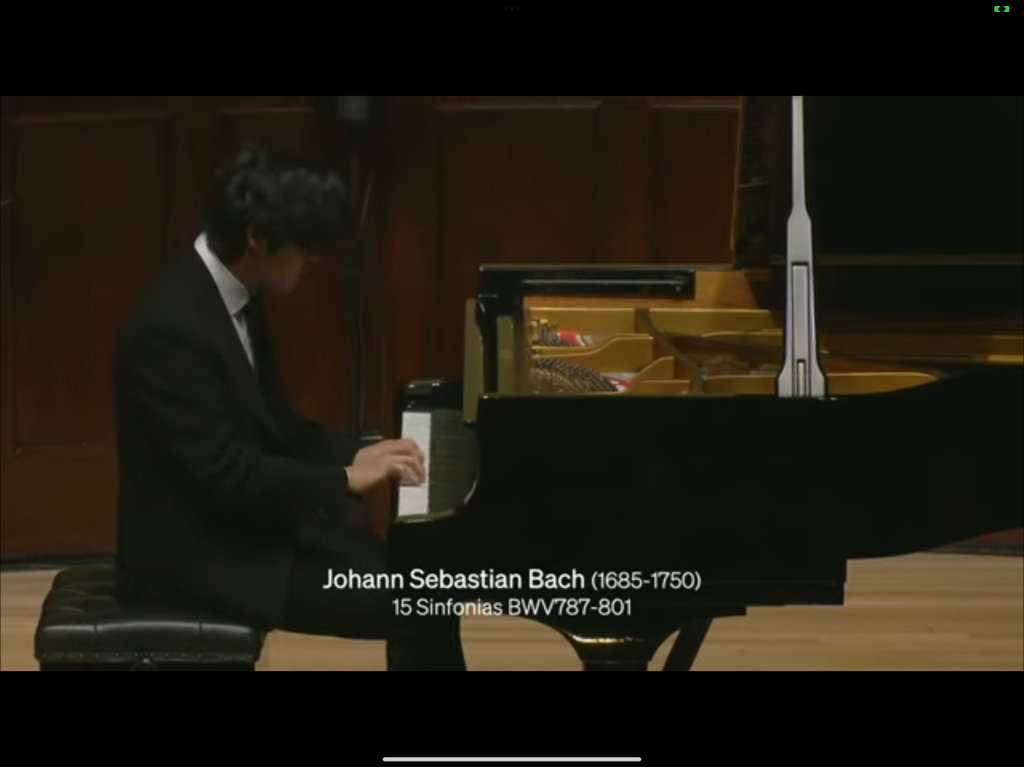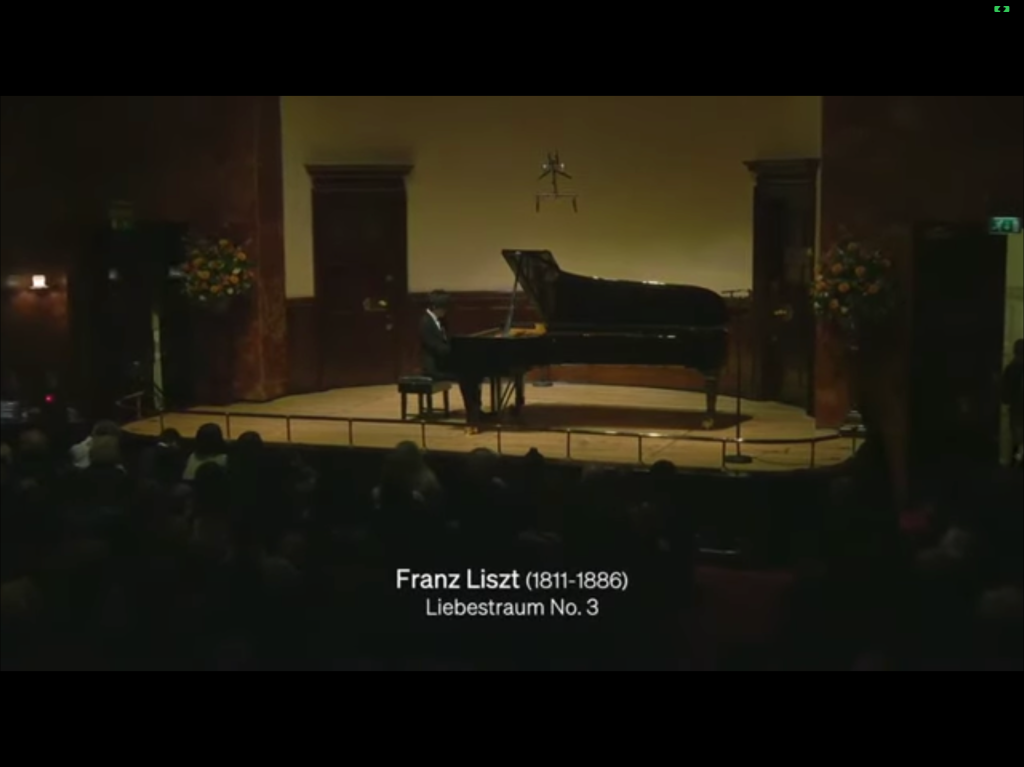Tuesday 31 January 3.00 pm

I have heard Tyler play many times over the past few years and it is good to see how he has matured into an artist of great stature.A technical assurance allied to a musical intelligence and curiosity that allows him to delve deep into the piano archives finding many unjustly neglected scores.The marvel is that Tyler together with Mark Viner and Thomas Kelly are a hope for future music making and are able to bring their discoveries vividly to life in recording and on the concert platform Three artists ,each very different,all with a superb technical training giving their playing such weight and assurance.Not always an easy thing as much of the music was written for composer – virtuosi and make great demands on the pianist.All three received their early training at the Purcell School for gifted young musicians and all three went to the Royal College of Music to perfect the base that they had been given as gifted youths.Both Tyler and Mark Viner studied with that superb trainer of young musicians Tessa Nicholson (both later perfecting their studies with Niel Immelman ).Another of her students from Purcell and later continuing with her at the RAM,Alim Beisembayev ,recently won the Gold Medal at the Leeds.Thomas Kelly studied with the late Alan Ball at the Purcell School and later at the RCM .The intense beauty Tyler brought to the Field nocturnes was matched by the dynamic virtuosity required from Clementi (his infamous Gradus ad Parnassum gives some idea of what is expected).The Liszt Venezia e Napoli showed off his superb sense of style as well as dynamic showmanship.


John Field (26 July 1782 – 23 January 1837), was an Irish pianist, composer, and teacher.He was born in Dublin into a musical family, and received his early education there, in particular with the Italian composer Tommaso Giordani .The Fields soon moved to London, where Field studied with Muzio Clementi .Under his tutelage, Field quickly became a famous and sought-after concert pianist. Together, master and pupil visited Paris,Vienna and St Petersburg.Ambiguity surrounds Field’s decision to remain in the former Russian capital, but it is likely that Field acted as a sales representative for the Clementi Pianos.

Field became well-known for his post-London style, probably developed in Moscow around 1807. The characteristic texture is that of a chromatically decorated melody over a sonorous left hand supported by sensitive pedalling. Field also had an affinity for ostinato patterns and pedal points, rather unusual for the prevailing styles of the day. Entirely representative of these traits are Field’s 18 nocturnes and associated pieces such as Andante inedit, H 64. These works were some of the most influential music of the early Romantic period and do not adhere to a strict formal scheme but create a mood without text or programme.They were admired by Chopin who subsequently made the piano nocturne famous, and Liszt who published an edition of the nocturnes based on rare Russian sources that incorporated late revisions by Field.
None have quite attained to these vague eolian harmonies, these half-formed sighs floating through the air, softly lamenting and dissolved in delicious melancholy. Nobody has even attempted this peculiar style, and especially none of those who heard Field play himself, or rather who heard him dream his music in moments when he entirely abandoned himself to his inspiration.– Franz Liszt’s preface to his edition of Field’s nocturnes, 1859.

Muzio Filippo Vincenzo Francesco Saverio Clementi (23 January 1752 – 10 March 1832) was an Italian composer,pianist,pedagogue,conductor ,music publisher, editor, and piano manufacturer, who was mostly active in England.Encouraged to study music by his father, he was sponsored as a young composer by Sir Peter Beckford who took him to England to advance his studies. Later, he toured Europe numerous times from his long-standing base in London.Clementi moved with his wife Emma (née Gisborne) and his family to the outskirts of Lichfield ,Staffordshire and rented ‘Lincroft House’ on the Earl of Lichfield`s Estate from 1828 until late 1831. He then moved to Evesham where he died on 10 March 1832, after a short illness, aged eighty. On 29 March 1832, he was buried in the cloisters of Westminster Abbey.Accompanying his body were three of his students: Johann Baptist Cramer, John Field and Ignaz Moscheles. He had five children, a son Carl by his wife Caroline (née Lehmann) who died soon after his birth and the others, Vincent, Caecilia, Caroline, and John Muzio with his second wife Emma.

Didone Abbandonata – Piano Sonata in G, Op. 50, No.3 is the final sonata composed by Muzio Clementi in 1821. It was titled after Metastasio’s often-set opera libretto where Clementi seeks to tell the tragic story of Virgil’s heroine instrumentally. It is the only example of such a programmatic piece in the composer’s oeuvre.One of the most eminent pianists of his time – who even engaged in a contest with Mozart and did not lose – Muzio Clementi created fundamental pedagogical works for piano and altogether 63 sonatas for piano solo. Didone abbandonata dates from his last compositional opus for solo piano sonatas written in 1821. The topic of Dido, who was abandoned by Aeneas and expressed her grief through mourning, despair and, ultimately, raving madness, was extremely popular and subjected to countless arrangements since the 17th century in operas, single “scena” and many instrumental works. The performance instructions for the sonata are as numerous as they are uncommon, and symbolize Dido’s hyper-expressiveness.
The only other time I have heard this work was by the distinguished Italian pianist ,Sandro de Palma,who has a similar curiosity to Tyler of searching out neglected works as they delve ever deeper into musical archives https://christopheraxworthymusiccommentary.com/2017/11/19/sandro-de-palma-in-viterbo-a-didone-never-abandoned/

Venezia e Napoli where each of the three piece is based on what was familiar material in the streets of Italy at the time of their conception.
Gondoliera is described by Liszt in the score as La biondina in gondoletta—Canzone di Cavaliere Peruchini (Beethoven’s setting of it, WoO157/12, for voice and piano trio just describes it as a Venetian folk-song, and Peruchini remains elusive) and he treats it in a much gentler way than in the earlier version with a particularly fine verse with tremolo accompaniment; the tremolo guides a very dark musing upon Rossini’s Canzone del Gondoliere—‘Nessùn maggior dolore’ (Otello) which itself recalls Dante’s Inferno and the Tarantella—incorporating themes by Guillaume Louis Cottrau (1797–1847)—emerges from the depths, much more subtle than in its previous, primary-coloured garb, but ultimately triumphantly boisterous.

Tyler Hay was born in 1994 and gained a place to study at the Purcell School in 2007 where he studied under Tessa Nicholson. He studied with Graham Scott and Frank Wibaut at the RNCM and with Niel Immelman and Gordon Fergus-Thompson at the RCM. Tyler has performed Rachmaninoff’s 2nd Sonata at Wigmore Hall, Scriabin’s 5th So nata at the Purcell Room and Ravel’s Concerto for Left Hand Alone at the Queen Elizabeth Hall . In 2016, Tyler won first prize in the keyboard section of the Royal Overseas League Competition and as well as winning the RNCM’s Gold medal competition, also won first prize in the Liszt Society Competiti on. He competed in the final stages of the Leeds International Piano Competition in 2021 and won 1st prize in the Dudley International Piano Competition in November, 2022. CDs of Liszt, John Ogdon and Kalkbrenner are available on Piano Classics and Tyler’s latest album of virtuoso piano music by Simon Proctor is now available on Navona Records
https://christopheraxworthymusiccommentary.com/2020/10/06/tyler-hay-at-st-marys/
https://christopheraxworthymusiccommentary.com/2019/06/22/tyler-hay-pays-homage-to-a-genius/
https://christopheraxworthymusiccommentary.com/2017/06/21/tyler-hay-in-perivale/









